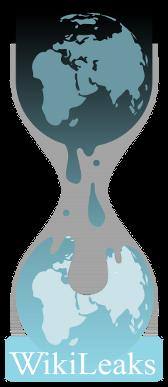
The latest round of U.S. State Department cables released by Wikileaks have hardly been surprising to anyone who follows foreign affairs. North Korea is a crazy state that everyone in the region wishes would collapse. Iran is the problem that dominates the security concerns of all its neighbors.
State Department cable writers often express an amazing degree of condescension and contempt regarding foreign leaders. The initial tranche of cables reminds me of the old expression that what is new is not interesting and what is interesting is not new. One can only hope that somewhere in the mass of additional material that Wikileaks founder, Julian Assange, threatens to inflict on the world there is something of real interest.
Among the “facts” confirmed by Wikileaks is the growing threat posed by rogue states’ ballistic missiles to the United States and its friends and allies abroad, the extensive collaboration between North Korea and other proliferators, notably Iran, and the conflicted role of states such as Russia and China when it comes to the proliferation of nuclear weapons and ballistic missiles. According to the New York Times, North Korea provided Iran with 19 complete advanced ballistic missiles which were based on Russian technology that somehow “leaked” out of that country. This transfer of missile technology to Iran substantially increased Teheran’s ability to threaten countries in Eastern and Central Europe. Moreover, the North Korea/Russian rocket engine technology provides the basis for Iran’s development of even longer-range missiles, perhaps ones capable of reaching the United States. Possibly even more alarming is the information contained in another cable that when the government in Beijing was approached to halt a specific shipment of North Korean missile parts transiting China on its way to Iran the U.S. request was rebuffed.
The conclusion to be drawn from the information provided by Wikileaks is that the administration was right when it warned last year that the threat from Iranian ballistic missile proliferation was growing faster than had been previously predicted. As a result, the Obama Administration concluded that it had to move faster to deploy missile defenses. The result was the Phased Adaptive Approach (PAA) designed to ensure that the capability of U.S. missile defenses anticipated and outpaced the development of ballistic missile threats. The initial defensive deployments involve, first, expansion of the sea-based and, somewhat later, a land-based, mobile version of the Aegis Ballistic Missile Defense System (BMDS) with the new Standard Missile 3. The Obama Administration argued that the new defensive architecture was more appropriate to the then-limited capability of Iranian ballistic missiles and could be deployed faster than the so-called Third Site architecture based on a fixed radar and a small number of long-range interceptors deployed in Eastern Europe.
The United States may not have the time it anticipated when it announced the PAA. Transfers of ballistic missiles from North Korea to Iran and leakage of advanced missile technologies from Russia and China threaten a more rapid and dangerous increase in rogue state capabilities than anticipated by the administration. The schedule for the PAA does not anticipate deployment of a land-based version of the Aegis BMDS until 2015 and a more capable version of the Standard Missile 3 until 2018. The fourth phase in the PAA, which would provide a defense against long-range ballistic missiles, would not come into being until 2020 at the earliest.
The DoD entity responsible for implementing the PAA, the Missile Defense Agency (MDA), should take steps to anticipate further acceleration in ballistic missile threats to U.S. allies abroad and even to the U.S. homeland. Additional capabilities should be developed that can complement the planned deployments under the PAA. For example, deployments of the U.S.-built Theater High-Altitude Area Defense system could provide additional intercept capability against shorter-range ballistic missiles. Similarly, the Network Centric Airborne Defense Element (NCADE), based on the AMRAAM air-to-air missile, could provide both additional, low-cost defensive fire power and the prospect for early or boost-phase intercept of longer-range ballistic missiles. Above all, MDA needs to anticipate the early deployment of longer-range Iranian and North Korean ballistic missiles.
----
Daniel Goure, Ph.D.
© defpro.com
-
Thursday, December 2nd 2010